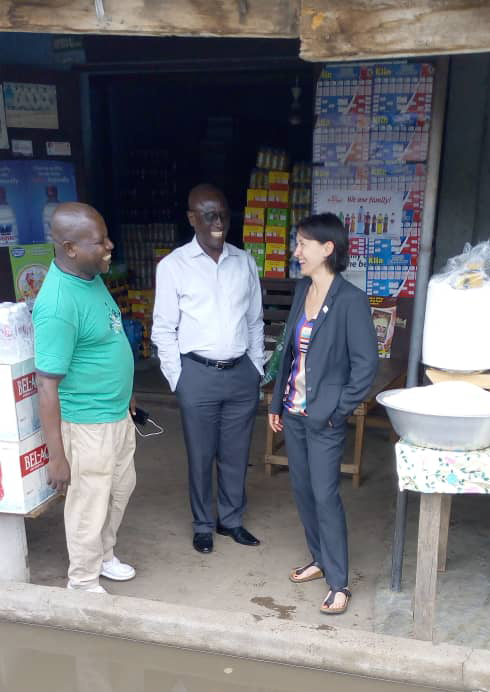 USA Rice's Eszter Somogyi (right) conducts market research
USA Rice's Eszter Somogyi (right) conducts market research
Jun 07, 2019
ACCRA, GHANA – USA Rice traveled here last week to gather information on the potential for increased U.S. rice sales to this West African country. Ghana is one of the most stable countries in the African region, with increasing GDP and a secure political environment, however, the cedi (local currency) is prone to inflation and exchange rate fluctuations, which makes import of products challenging. Additionally, due to relatively low disposable income, consumers here are extremely price sensitive, having to make day to day choices on food consumption and other expenses.
Ghana was a major importer of U.S. grown rice until 2013. The majority of U.S. exports were milled long grain rice, as well as some U.S. jasmine rice. However, in 2013 increased prices from the U.S. coupled with more favorable prices from Thailand and Viet Nam shifted the market towards fragrant jasmine rice, and U.S. rice sales dropped from 103,300 MT in 2013 to 20,700 MT in 2014.
In the decade between 2004-2014 USA Rice worked with major local importers coordinating multi-platform advertising and other activities targeting the foodservice sector but after 2014, the U.S. was effectively priced out of the market and shipped only 5,400 MT in 2018.
“USA Rice used funds under the U.S. Department of Agriculture’s Agricultural Trade Promotion program (ATP) for CY 2019 to re-evaluate the market situation in Ghana and determine the feasibility of developing promotional plans to build strong brand equity for U.S. origin rice based on high quality,” said Eszter Somogyi, USA Rice director for Europe, Middle East, and Africa.
Total yearly consumption is estimated at around 1 million MT and is increasing annually due to population growth and the changing lifestyle of the locals moving consumption away from traditional foods like yams to convenient and healthy staples like rice. Local production is estimated at 470,000 MT. According to trade sources, total rice imports in 2018 were 510,000 MT: 60-65 percent was jasmine mostly from Viet Nam and Thailand, the rest of the market was mostly long grain milled rice from India, Thailand, and the United States.
“Although they have developed a preference for fragrant varieties, recognition of U.S. rice brands is still high among consumers,” said Somogyi. “The market is very price sensitive and there is strong price competition from Asian origins, but we aim to target segments, such as foodservice professionals, that appreciate the quality characteristics of U.S. rice.”
The government of Ghana recently announced a 50 percent reduction in import benchmark prices for many imported food items, including all types and origins of rice. This effort to increase traffic in Ghana’s sea ports is another factor that is expected to result in increased rice imports to the country.